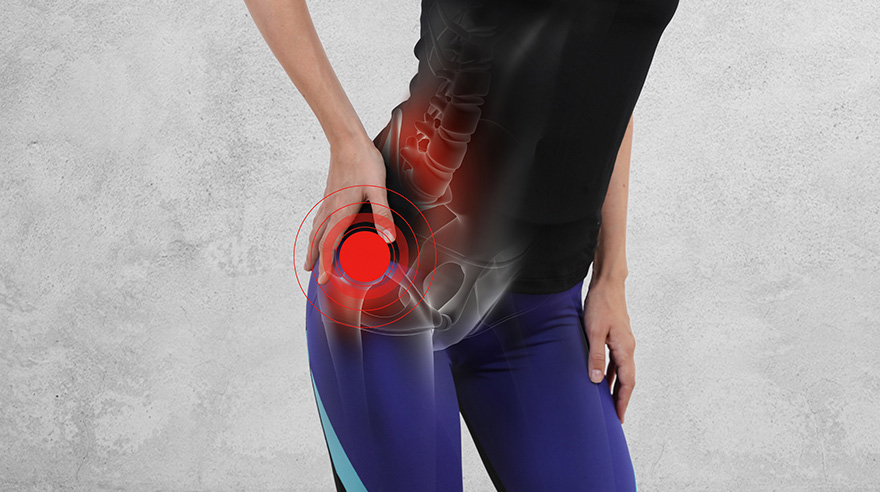What is AVN?
AVN, an acronym for Avascular Necrosis, is also widely referred to as Osteonecrosis. This is a particular condition where the stem and progenitor cells in the bone cease to function after the blood supply is obstructed causing the bone to die.
It typically originates as a terrible pain after which the bone inside the ball (Femur head) and the hip joint is affected (Damage and degeneration) ranging from months to years and the ball and socket joint dies within a period ranging from months to years. It eventually causes the bone to collapse, which turns the square peg into a round hole. This condition can affect anyone, however, is most common in people of the age group 30 to 50. On average, 20,000 people are affected with Avascular Necrosis every year.
Symptoms:
During the initial stages of Avascular necrosis, one may not be able to identify the symptoms. However, as the disease progresses there might be slight pain in the affected area of the joint. After the bone collapse, the joint and surrounding area will be prone to terrible pain leading to immobility of the joint. As the condition gradually worsens, the affected joints might hurt when pressure is applied(Standing, walking and stair climbing). Avascular Necrosis of the hip can cause pain in the groin, thigh or buttock. Apart from the hip, knee, shoulder, hand and foot can also be affected. Few patients might develop avascular necrosis on both the sides of the hips or knees.
The causes can vary in different patients which restricts the blood flow to the bone.
- Fatty Lipids: The deposits of fats(lipids) have the ability to block small blood vessels reducing the blood flow to bones.
- Joint or Bone Trauma: Injuries related to dislocated joints might damage the blood vessels in the affected area and can weaken the bones.
- Existing ailments: Patients with existing medical conditions like Gaucher’s disease and sickle cell anemia can also reduce the blood flow to the bone.
Use of Cortico-steroids or Chemotherapy – Add on medication used for other ailments causing AVN.
Treatment/Procedures:
The treatment most orthopedics recommend for Avascular necrosis treatment is usually a major surgery. Depending on the stage of AVN, they either perform core decompression, bone grafting, bone reshaping or a joint replacement.
- A section of the healthy bone is taken from another part of the body as a part of grafting. It helps strengthen the area of bone affected by AVN.
- In core decompression, a surgeon removes a part of the bones’ inner layer. The extra space inside the bone helps in growing healthy bone tissue and new blood vessels while reducing the pain.
- In the weight-bearing joint, a wedge of the bone is removed below or above the wedge of the bone, which shifts the weight of the damaged bone in the bone reshaping process. This process might help in postponing a joint replacement.
- Joint replacement is replacing the damaged parts of the affected joint with plastic or metal parts in case the bone has collapsed or if the other treatment options aren’t yielding better results.
AVN Treatment Without Surgery:
Medicine always evolves from less invasive procedures, for a fact that they produce fewer side effects and complications compared to surgery. The regenerative medicine publications can date back to the 1960’s. The practice of treating ligaments to treat ailments like lower back pain was prevalent in the ‘30s and ‘40s.
During the Avascular necrosis treatment without surgery, bone marrow aspirate concentrate from the patient’s own bone marrow is used to heal the dead bone. This non-surgical, minimal invasive procedure requires the extract from the bone marrow and BMAC(bone marrow aspirate concentrate) to be injected to the right spot of the injured area, skipping the surgery.
Avascular necrosis treatment without surgery can comprise platelet rich plasma injections, Bone Marrow Aspirate concentrate injections, lubrication joint injections, ultrasound guided musculoskeletal injections, orthobiologics, prolotherapy and physical therapy.
With regenerative medicine procedures, patients can be treated for osteoarthritis, joint injuries, back pain and most common sports injuries. During the years of research, interventional orthobiologics have yielded great results and have proved far more beneficial than surgeries. The main focus of Avascular necrosis treatment without surgery is preventing re-injury and having a shorter recovery period with improved flexibility and decreased pain levels.







Comments